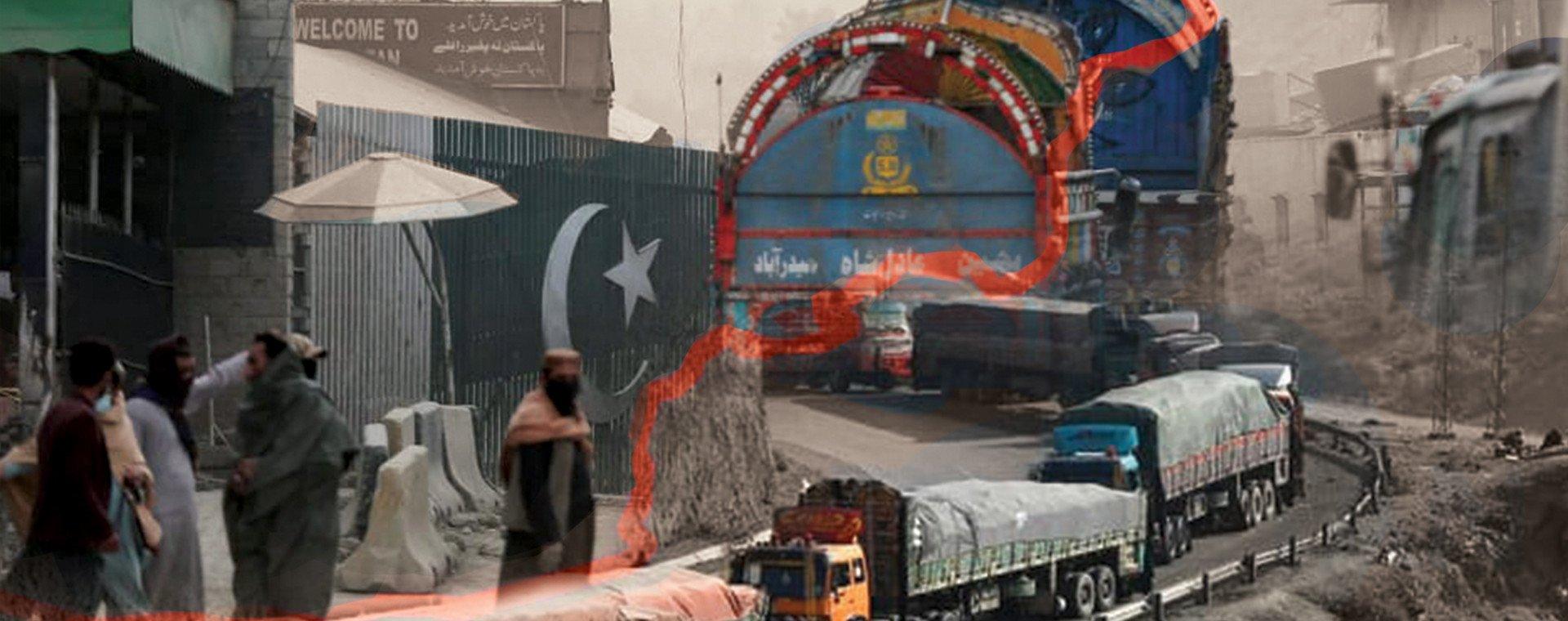PUBLISHED on November 16, 2025
ISLAMABAD:
After the failure of the Istanbul Dialogue and two terrorist attacks on its soil from Afghanistan, Pakistan’s likely move to simultaneously exercise the options of blocking human and commercial movement across the border and flexing its security muscles may compound Kabul’s woes and increase internal pressure on the regime to normalize relations.
According to trade statistics, Afghan exports to Pakistan accounted for 45% of its total exports in 2024, making Islamabad the largest trading partner. Kabul’s heavy dependence on Islamabad and its landlocked status mean the western neighbor has limited alternatives to suddenly find a sustainable market for almost half of its exports.
From its southeast, south and east sides, Afghanistan uses three border crossing points to sell its goods to Pakistan. These are close to its agricultural products and make Pakistan an economically viable option to sell fresh fruits, vegetables and dry fruits.
According to Pakistan Customs, Kabul exported Rs 170 billion worth of goods to Pakistan through these border posts in the financial year 2024-25. More than 70 percent of the goods were shipped via Torkham border, followed by a fifth from Ghulam Khan and the rest via Kharlachi point.
After the borders were closed due to unrest and the serious security situation, Afghan farmers are suffering huge financial losses. Afghan exports of perishable products such as fresh fruits, vegetables and dried fruits depend on short-distance, low-cost transportation to Pakistani markets. Diversion to other countries makes these exports less competitive due to longer transit and higher risks of rotting of perishables. There is also a lack of cold storage facilities to transport perishable goods to long-distance seaports.
Aware of the situation and to avoid losses, Afghan exporters continue to desperately try to reach Pakistani markets through alternative routes. On November 8, Pakistani customs blocked the importation of goods of Afghan origin via Iran by misusing the Early Harvest program. The attempt was made to use the Taftan post on the Iranian side.
Pakistan Customs did not allow the consignment to enter Pakistan on the grounds that the early harvest program was aimed at providing mutual benefits to farmers of both countries on a bilateral and reciprocal basis. However, no trade was taking place between Pakistan and Afghanistan as the borders remained closed.
Customs also refused entry of goods of Afghan origin on the grounds that there was a potential risk of misuse of the early harvest scheme, as similar consignments can be imported from Iran under the guise of Afghan origin, given that both countries produce comparable fresh fruits, such as grapes and apples, which are also covered by the early harvest scheme.
If Pakistan does not open its borders and also restrict the movement of Afghan citizens, the interim government may not have many options in the short term. Alternative routes through Iran are Chabahar port and Hairatan-Termez, Torghundi-Serhetabat in Central Asia.
These corridors face high transport costs, weak infrastructure and complex regional politics. Thus, despite the tensions, Pakistan would remain the most viable and profitable trade corridor for Afghanistan for the foreseeable future.
Afghanistan’s interim government this week expressed a desire to pursue alternative trade routes, but it may not be able to offer these opportunities to its exporters in the short to medium term.
Iranian roads are longer and more expensive, resulting in higher transportation and fuel costs than Pakistani corridors. The Kandahar and Helmand regions are approximately 150 to 300 kilometers from the Pakistani borders of Chaman-Spin Boldak, but 1,200 to 1,300 kilometers from the Iranian borders of Zaranj or Delaram.
Similarly, Balkh and Baghlan are approximately 500 to 700 kilometers from Pakistan’s Torkham-Jalalabad borders and 900 to 1,000 kilometers from Islam Qala in Iran.
Alternative routes would significantly increase transportation costs, ranging from 30 to 50 percent. Where Afghan farmers face problems, Pakistani transporters also have fewer income opportunities due to border closures.
The growing number of Afghanistan-bound goods stuck in Pakistan despite international borders being closed after skirmishes highlights landlocked Kabul’s dependence on Pakistan and its desire to seek alternative routes.
According to Pakistani customs, more than 5,500 containers bound for Afghanistan are stuck on the roads or at the port of Karachi. Around 4,650 containers were stuck at sea and land ports after Pakistani customs stopped processing them due to the closure of international borders.
Pakistan did not suspend the transit trade agreement with Afghanistan, but it did not carry out customs clearance of goods due to border closures to avoid traffic jams at the Chaman and Torkham borders. There were 729 containers stuck at the Chaman border and another 142 at the Torkham border.
Pakistan has made many positive gestures on the fronts of trade, humanitarian assistance, educational and medical visa facilitation, and efforts in international forums to encourage the international community to engage with the Taliban regime in the interest of regional peace and stability and for the socio-economic development of Afghanistan and its people.
But the Taliban regime’s response has been nothing but empty promises, inaction and the excuse that it cannot act against the terrorist group. If the situation does not improve, Pakistan could also consider other economically punitive measures, including requiring bank guarantees against goods in transit.
Pakistan suffered immense military and civilian losses, exercised utmost restraint and did not retaliate, according to the Pakistani Foreign Ministry.
However, everything now indicates that maximum restrictions may no longer be an option.
Pakistan’s Foreign Ministry said the Taliban regime was constantly trying to misrepresent the issue of Pakistani terrorists hiding in Afghanistan as a humanitarian issue. Following Operation Zarb-e-Azb in Pakistan in 2015, terrorists belonging to the so-called TTP/FaK fled to Afghanistan.
The recent terrorist attacks on the Islamabad court complex, which killed more than 12 innocent civilians, and the attack on a cadet college in Khyber Pakhtunkhwa could be the final straw.
According to Pakistani authorities, Sajid Ullah alias Shina, who was the perpetrator of the suicide attack, confessed that TTP commander Saeed ur-Rahman alias Dadullah, a resident of Charmang, Bajaur, who is currently living in Afghanistan and is the TTP intelligence chief for the Nawagai of Bajaur, had contacted him through the Telegram application and asked him to carry out a suicide attack in Islamabad in order to inflict maximum damage on law enforcement agencies.
Dadullah sent Sajid ullah (Shina) the photos of suicide bomber Usman alias Qari so that he could receive him in Pakistan. The suicide bomber, Usman (Qari), belonged to the Shinwari tribe and resided in Achin, Nangarhar, Afghanistan.
Traces of the Cadet College attack are also being found in Afghanistan by security agencies.
Former Pakistan Ambassador to Kabul Mansoor Ahmad Khan argued on Express News show, The Review that the government can use the three options of restricting movement of people, trade and using security means to pressure the regime to take action against the terrorist group. But he stressed the need to try to reopen dialogue with Afghanistan.




